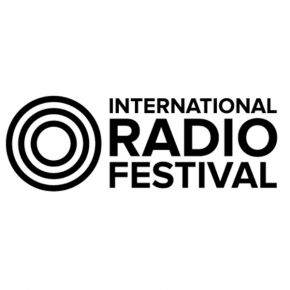Western radio stations on path to resurgence

It's a niche market for sure, but with a loyal following and content across the demography, western music radio stations do account for a tiny pie of Rs 11 billion plus radio industry.
Till five years ago, the western music radio or for that matter television- landscape was bleak in India. Bollywood's monopolization of the airwaves, spiralling costs in marketing and promotions even forced a few stations to shut down. The industry however has steadily grown and has managed to carve its space in a market dominated by Bollywood songs and talk shows.
"Chances of radio stations growing are very good. Bollywood music has always been a dominant factor, but that's no reason to not have international music trends to be a part of that structure. If western consumer brands had not come into India at various points in time we would all still be wearing dhoti-kurta and Gandhi topis and still watching only two channels on Doordarshan. The audience for 'western' music has always existed since India was exposed to the culture of the British and before them, the Portuguese," 9XO programming head Luke Kenny says.
The audience range for the space is surprisingly wide. While the core target group (TG) of the stations is mainly 18-21 years, Western music is also consumed by the 13-35 year olds and above across the urban and smaller centres in India.
"The audience profile for western music radio stations is the educated upwardly English speaking and English newspaper reading individual whose heart is Indian but outlook global / international," points out well-known RJ Hrishikesh Kannan aka Hrishi K of 94.3 Radio One (Breakfast show 'Good Morning Mumbai' from 7am-12pm on weekdays).
For a niche audience however, airtime has to be strictly segregated for maximum impact, both for stations and advertisers.
"Although every 18-21 year old is into the pop music space, they also oscillate between the classic-Electronic Dance Music (EDM) spaces. For them music listening is mood and opportunity generated, depending on the accessibility," Kenny avers.
The basic content of a ‘typical' western music radio station starts with the morning / breakfast radio show that play hits from the 70s, 80s and 90s with a smattering of current adult contemporary hits in the pop rock space.
"This is because listenership is predominantly people on their way to work or getting ready to go to work. Moreover the college crowd is where we hope they should be- in colleges," Kannan states.
The evening show moves to a contemporary hits space with Dance, R&B and current top 40 international sounds. The music becomes ‘younger' and even slightly edgier once the night time show kicks in.
Ironically, the medium which has helped radio in its second innings is the internet. Thanks to social media like Facebook and Twitter, listeners propagate the message of radio stations with very little cost to the stations.
"Radio stations with an international format don't need to spend (much) on marketing to get ears now. Our TG is so active online that a Facebook or Twitter post is most effective as a no cost marketing tool. The Indian of today is world exposed thanks to improving broadband and 3G connectivity and wants a piece of the world on his local radio where the talk is like his spoken language. Even Bollywood aficionados sample us in huge numbers because we have interviews and content from the biggest stars like Katrina Kaif to Salman Khan on our station," Kannan says.
On the business viability of radio stations- for promoters, advertisers and investors- international/ western music radio is increasingly making business sense.
The Indian Media & Entertainment (M&E) sector is a sunrise industry. The momentum of spends on leisure and entertainment is higher than the economic growth, owing to favourable demographics and rising disposable incomes. A recent KPMG report anticipates the market size of Indian M&E sector to touch Rs 1,457 billion by 2016.
Within the M&E industry, the radio industry registered an overall growth of 15 per cent to reach Rs 11.5 billion in 2011 as against Rs 10 billion in 2010. The growth, as per the analyses, was driven by volume increases in certain markets and rate increases for the leaders in metros.
"There are about, to my knowledge, four or five ‘western' music stations in the country with an average existence of 4-5 years between them. And with the youth population demographic on an ever increasing scale, brands and communication across the board is getting more and more global, international and ‘western'," Kenny states.
Companies who want to spread their products and services' visibility to maximize impact, are willing to invest in both mainstream Hindi stations and those with English content.
"Drawing a parallel from television, just like a Louis Philippe, Audi, Skoda, a Nivea or a Surf buy their airtime on a mainstream general entertainment channel (GEC) and supplement it with buying airtime on a so called niche international/English channel like Star World or HBO, the same is happening and shall continue to happen on radio. Premium as well as regular brands buy airtime on say Radio Mirchi for example but alongside have made Radio One a destination and option of choice," Kannan concludes.














